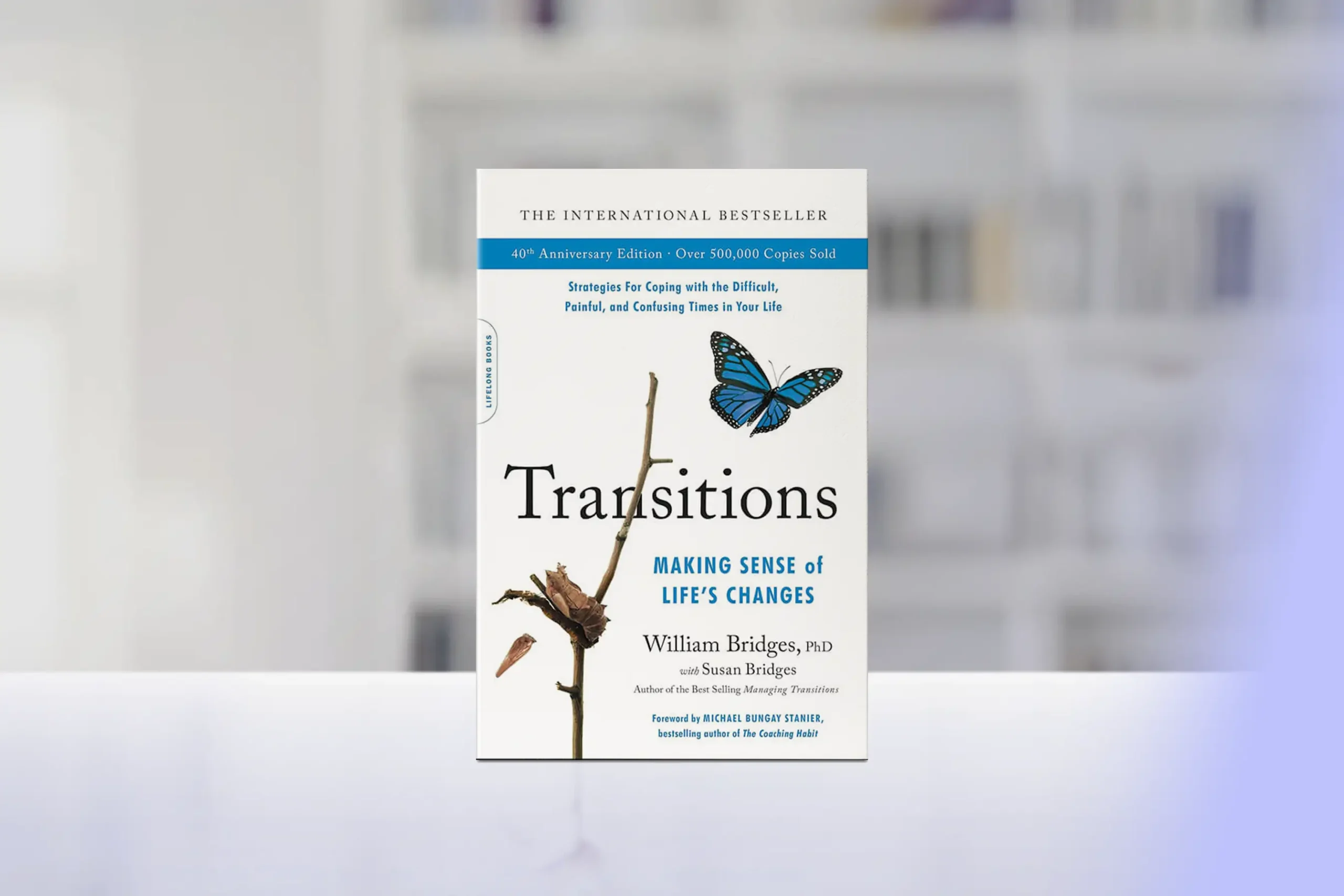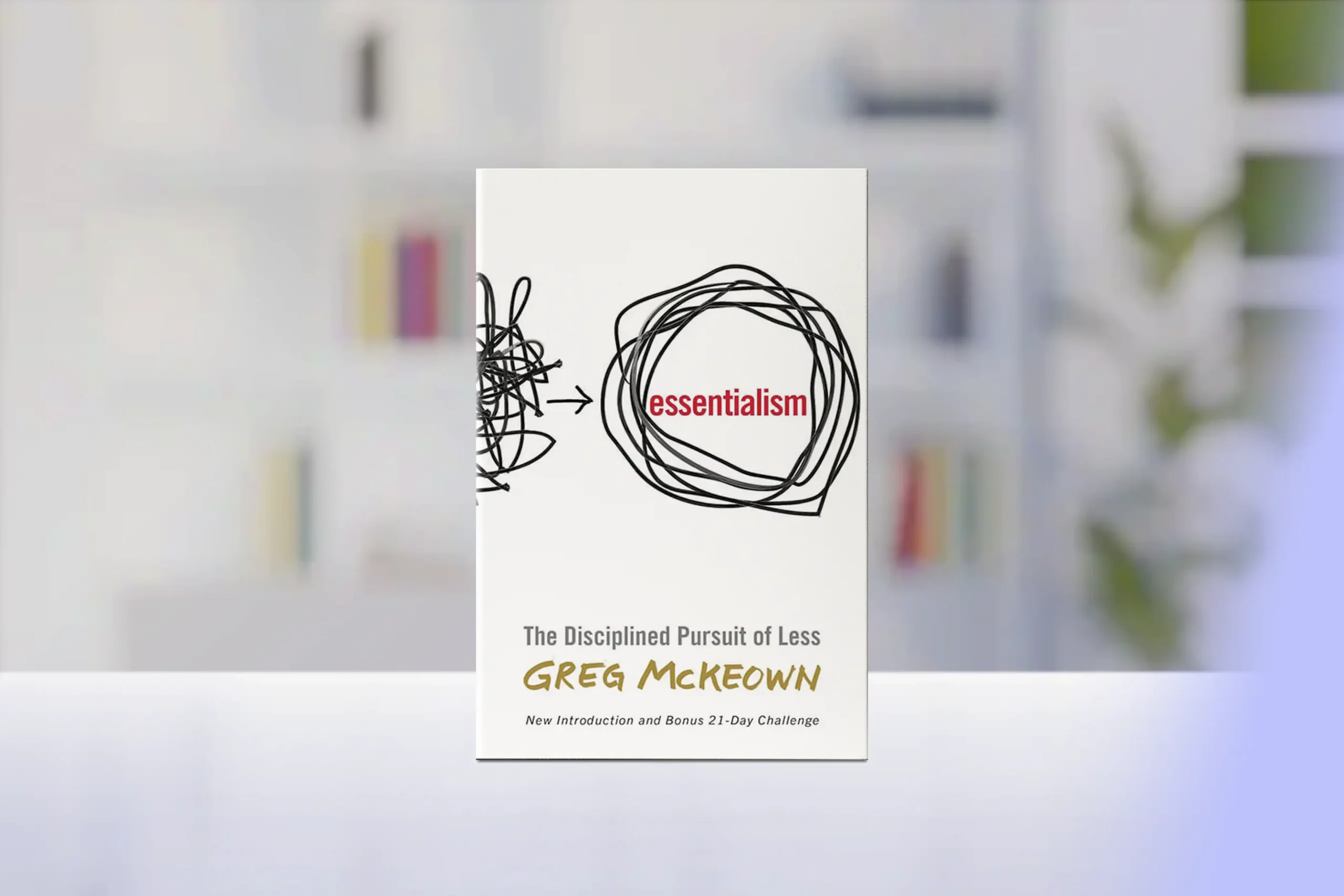Introduction
Motivation is the heartbeat of personal transformation. Everyone dreams of becoming the best version of themselves, yet the journey of self-improvement often feels like navigating a complex series of obstacles. Recent research reveals a stark reality: while over 90% of people set personal development goals, only around 15% actually achieve them. What separates success from stagnation? The answer lies in understanding the nuanced power of authentic motivation.
This high failure rate mirrors findings in organizational contexts. A Harvard Business Review article reveals that strategic initiatives fail at rates between 60% to 90%, often due to poor strategy design and lack of clarity—factors equally applicable to personal development. Just as businesses struggle when their strategies are flawed or unclear, individuals often falter not from lack of effort, but from fundamental issues in how they approach their transformation journey.
The widespread nature of goal-setting itself is noteworthy. A recent Gallup poll found that 70% of U.S. adults are likely to set personal goals, with health/fitness (80%), finances (69%), and personal development (59%) being the most common focus areas. Yet despite this widespread intention for self-improvement, only about a third of individuals plan to write down their goals and create specific action steps. Perhaps most tellingly, while 95% of goal-setters express optimism about achieving their objectives, 55% admit they will likely set the same goals the following year—highlighting the persistent gap between intention and sustainable change.
In his groundbreaking book “Drive: The Surprising Truth About What Motivates Us,” Daniel Pink challenges conventional wisdom about what truly inspires lasting change. Supporting this perspective, The Journal of Positive Psychology reports that individuals with a clear sense of purpose not only experience greater fulfillment but also earn 20% higher annual incomes compared to those lacking defined direction.
This guide will explore the psychology of motivation through the lens of personal growth, revealing how different motivational forces can transform your identity, and providing actionable strategies to become your best self. Whether you’re seeking deeper self-knowledge or complete reinvention, understanding your core motivations is the foundation of authentic personal evolution.
Defining Your Best Self: The Purpose-Driven Approach
Before diving into transformation strategies, we must address a fundamental question: How do we determine what the “best version of ourselves” actually means? Without clarity on this point, motivation remains directionless, and growth lacks meaningful context.
Research from Stanford University suggests that individuals who define their “best self” based on external standards or societal expectations often experience what psychologists call the “arrival fallacy” – achieving goals only to find that the anticipated fulfillment remains elusive. In contrast, those who define their best self through the lens of personal purpose report 34% higher life satisfaction and 28% greater resilience in the face of setbacks.
Recent studies on Self-Determination Theory further validate this approach. According to research published in The Influence of Personal Motivation and Innovative Climate on Innovative Behavior, intrinsic motivation—driven by autonomy, competence, and relatedness—is critical for innovative behavior and personal growth. Environments that fulfill these fundamental psychological needs amplify intrinsic motivation, fostering creativity and authentic development.
The Purpose Discovery Process
Defining your best self begins with uncovering your authentic purpose – the unique contribution you’re designed to make. This process involves several key explorations:
- Values Clarification: Identifying your core principles that remain consistent regardless of external circumstances
- Strengths Assessment: Recognizing the capabilities that energize rather than deplete you when exercised
- Impact Visualization: Imagining the difference you wish to make in your relationships, community, and world
- Legacy Reflection: Considering how you wish to be remembered and what that reveals about your priorities
According to purpose researcher Dr. William Damon, “Purpose is a stable and generalized intention to accomplish something that is at the same time meaningful to the self and consequential for the world beyond the self.” This dual focus – personal meaning and external contribution – creates a powerful compass for defining your best self.
For an in-depth exploration of purpose discovery, explore our companion articles: “Discovering Your Life’s Purpose: Step-by-Step Guide”.
The Psychology of Self-Transformation
At its essence, personal growth is fueled by a complex interplay of internal drives, environmental factors, and neurological processes. Research in neuroscience demonstrates that motivation activates reward pathways in our brain, releasing dopamine that compels action. However, sustainable personal transformation transcends these temporary chemical responses.
According to The Behavioral Neuroscience of Motivation, these neural mechanisms underpin all motivational behavior, but the key to lasting change lies in aligning these intrinsic motivators with our long-term goals and values. This alignment creates sustainable motivation patterns rather than fleeting impulses.
Further neuroscientific research from The Neuroscience of Growth Mindset and Intrinsic Motivation reveals that growth mindset interventions improve achievement and motivation by fostering intrinsic motivation. Brain imaging studies show that intrinsic motivation activates regions associated with learning and adaptability, supporting personal growth particularly when facing challenging tasks.
Three fundamental motivational components drive authentic personal growth:
- Internal Drive: The intrinsic motivation that emerges from personal satisfaction and genuine enjoyment of growth-oriented activities. Studies reveal that internally motivated individuals exhibit 49% greater creativity and 32% stronger commitment to personal development goals.
- External Catalysts: Recognition, accountability, and environmental factors that influence behavior change. While powerful for initiating transformation, research suggests that over-reliance on external motivators can actually decrease intrinsic motivation by up to 36%, potentially undermining authentic personal growth.
- Purpose Alignment: The harmony between your actions and your deepest values. Research shows that individuals pursuing growth aligned with their core values achieve their personal transformation goals 27% more frequently.
For deeper insights into authentic personal development, consider exploring “The Science of Purpose: How It Fuels Human Flourishing.”
Four Pillars for Becoming Your Best Self
Transforming into your best self requires a structured approach built on four essential pillars. Each element reinforces the others, creating a robust foundation for lasting personal evolution. Implementing these pillars transforms fleeting motivation into a sustained journey of self-improvement.
1. Self-Knowledge and Purpose Clarity
Before embarking on personal transformation, you must develop profound self-awareness about who you are and who you aspire to become. This goes beyond setting goals – it’s about understanding the deeper meaning behind your desire for growth.
- Explore your core values and how they align with your vision of your best self
- Identify how your personal evolution will positively impact your life and those around you
- Create a vivid mental image of your authentic self at your highest potential
- 2. Growth-Oriented Challenges
The human brain thrives when engaged in optimal challenges. Too little challenge leads to stagnation, while excessive difficulty creates anxiety that impedes growth.
Research from James Clear’s comprehensive guide on motivation details how setting specific, challenging goals nurtures intrinsic motivation by fostering a sense of autonomy, mastery, and purpose. This strategic goal-setting creates the optimal conditions for sustained personal growth and achievement.
- Divide your personal transformation journey into meaningful developmental milestones
- Gradually increase challenge levels as your capabilities expand
- Acknowledge progress markers while maintaining focus on your evolving identity
3. Nurturing Environment
Your surroundings profoundly influence your capacity for personal growth. Creating conditions that support transformation is essential for sustained evolution.
- Organize physical spaces that reflect and encourage your evolving identity
- Cultivate relationships with those who recognize and nurture your potential
- Ensure access to growth resources aligned with your developmental needs
- Regularly expose yourself to content and people who embody your aspirational self
4. Reflective Accountability
External accountability dramatically increases the likelihood of consistent growth efforts, while reflection deepens the transformative impact of your experiences.
- Implement clear systems to track your personal evolution
- Establish regular self-reflection rituals to integrate learning
- Develop partnerships with mentors who see your highest potential
- Create meaningful ways to acknowledge transformative milestones
To enhance your understanding of sustainable personal development, explore “How to Build Self-Discipline for Personal Growth.”
Practical Pathways to Your Best Self
Below are concrete examples demonstrating how different individuals maintain motivation for personal transformation across various life dimensions.
Professional Evolution
- A designer documents daily creative experiments in a visual journal – Creating tangible evidence of growth reinforces evolving identity
- A leader dedicates weekly time for management skill development – Consistent investment in growth areas builds new capabilities
- An entrepreneur starts each day with intention-setting aligned with core values – Connecting daily actions to deeper purpose sustains transformation
Inner Development
- A mindfulness practitioner maintains a “growth insights” journal – Capturing shifts in perspective accelerates self-awareness
- A community volunteer reflects monthly on how service shapes their character – Regular reflection deepens the impact of experiences
- A student uses visual progress mapping for emotional intelligence goals – Seeing development patterns reinforces growth mindset
Relationship Growth
- A partner schedules bi-weekly “connection conversations” – Intentional communication builds relational depth
- A parent studies child development alongside their child’s growth – Parallel learning enhances adaptive parenting
- A colleague actively practices constructive feedback techniques – Skill development transforms professional relationships
Holistic Wellbeing
- A wellness enthusiast explores diverse movement practices to find authentic joy in activity – Experimentation reveals intrinsically motivating options
- A nutrition-focused individual cooks one new nourishing recipe weekly – Expanding capabilities creates sustainable lifestyle changes
- A recovery-minded person celebrates each month of progress – Acknowledging milestones reinforces identity transformation
Overcoming Personal Evolution Barriers
Even with strong intentions to grow, certain psychological and practical obstacles can impede your transformation journey. Understanding and actively addressing these common barriers is crucial for sustained personal evolution. Research indicates that individuals who successfully identify and overcome these barriers are three times more likely to achieve profound personal growth.
Identity Resistance
- Recognize that discomfort is a natural part of evolution: Understanding that identity shifts naturally produce resistance helps you interpret discomfort as confirmation you’re genuinely growing
- Create bridges between your current and emerging self: Identify aspects of continuity to maintain stability during transformation
- Practice self-compassion during transitions: Acknowledge the vulnerability inherent in growth and treat yourself with the kindness you would offer someone else in transition
Growth Inconsistency
- Build developmental rituals: Establish daily and weekly practices that reinforce your commitment to becoming your best self
- Link new behaviors to existing habits: Attach growth practices to already-established routines to increase consistency
- Create environment triggers: Place visual reminders of your aspiration self in spaces you encounter daily
Perspective Limitations
- Seek diverse feedback: Gather insights from varied sources to expand your understanding of your growth edges
- Engage with challenging viewpoints: Intentionally expose yourself to perspectives that stretch your thinking
- Practice regular horizon expansion: Explore new environments, ideas, and experiences that reveal previously unseen aspects of yourself
For additional strategies on navigating personal transformation, explore “Embracing Change: Strategies for Adapting to New Situations.”
4 Week Implementation Plan
Transforming motivation into authentic personal growth requires a structured approach. The following four-week framework provides a systematic path to becoming your best self, with each week building upon the previous foundation.
Week 1: Self-Discovery Foundation
- Conduct a personal inventory: Assess your current strengths, growth areas, values, and aspirations using reflective questions
- Map your motivational landscape: Identify what genuinely energizes your desire for growth versus what creates resistance
- Craft your personal evolution vision: Create a multi-faceted description of your best self that engages all senses
- Begin a self-awareness practice: Start with 10 minutes of daily reflection to strengthen your connection to your authentic self
Week 2: Environment Alignment
- Evaluate environmental influences: Document elements in your surroundings that either nurture or hinder your growth
- Minimize growth obstacles: Reduce exposure to factors that consistently undermine your evolution
- Amplify growth catalysts: Strategically introduce elements that support your transformation journey
- Create a physical anchor for your aspiration: Design or select an object that represents your best self
Week 3: Growth System Integration
- Establish self-tracking mechanisms: Implement a simple daily system to monitor your evolution process
- Develop supportive relationships: Connect with individuals who will witness and support your transformation
- Design meaningful milestones: Create significant markers to acknowledge important shifts in your development
- Implement regular learning integration: Schedule time to assimilate insights from your growth experiences
Week 4: Identity Reinforcement
- Practice embodiment of your evolving self: Begin consciously “trying on” aspects of your best self in daily life
- Refine your approach based on lived experience: Adjust your growth strategies based on what resonates authentically
- Celebrate emerging qualities: Acknowledge and appreciate new aspects of yourself as they develop
- Create a sustainable growth rhythm: Establish the pace and practice sequence that feels both challenging and sustainable
For deeper understanding of implementing personal transformation, read “The Art of Effective Goal Setting and Achievement.”
Your Evolving Better Future Self
How to become the best version of yourself isn’t a destination but an ongoing journey of expansion and refinement. Research confirms that individuals with a strong sense of continued growth experience 25% fewer depressive symptoms and 15% lower stress levels across their lifespan. As you implement these strategies, remember that personal evolution, like any meaningful process, unfolds through consistent practice and patient self-awareness.
Reflection Questions:
- What aspects of your current self already contain seeds of your best self?
- How might you more fully align your daily choices with your evolving identity?
- What environmental shifts would most powerfully support your transformation?
- Who in your life sees and nurtures your highest potential?
Your journey toward becoming your best self begins with a single intentional step, guided by genuine self-understanding. Remember, sustainable personal evolution isn’t built on momentary inspiration but on a profound connection to your authentic motivations and the systematic nurturing of your emerging potential.
The capacity for transformation lives within you. How will you honor it today?
24-Hour Challenge: Identify one aspect of your best self you wish to develop and take three actions today that align with this emerging quality.





